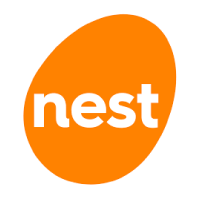How to effectively review a master trust provider – key questions to ask
So how do you go about doing this?

A useful way to break down the services offered by a master trust and to understand the value they deliver is by looking at the four core areas set out by The Pensions Regulator (TPR) in its Guide to Value for Member guidance. The four core areas are scheme governance and management, investment governance, administration and communications.
Under each area heading, I’ll look at why it matters and give an indication of what ‘good’ should look like to help you when comparing schemes.
1. Scheme governance and management
Selecting a scheme with good governance processes in place is vital. It’s integral to the smooth running of the scheme and achieving good investment outcomes for members.
How do you assess it? The first question is does it have independent recognition? For example, does it have the master trust assurance framework, or a Defaqto five-star rating? Is the scheme applying for master trust authorisation?
If the answer is ‘yes’, then you can feel confident that the scheme’s governance structures and processes are being independently reviewed and scrutinised.
2. Investment
Choosing a master trust provider which offers good investment returns seems like an obvious statement to make. How a member’s money is invested over their lifetime will have a big impact on the size of their pot when they come to withdraw it.
However, it’s important to look more closely at how a master trust delivers returns, particularly the default fund, but also the other alternative funds they offer.
Evidence shows more than 90 per cent of pension scheme members remain in the default fund, so perhaps the most important question is to ask how that fund is run? It’s important to look at the performance but also to consider the risk/reward profile of the fund – ie how much risk has been taken to achieve the return – and to think about how much risk is appropriate for your workers.
From research we have done at NEST, we know many savers are relatively risk adverse, so we take appropriate levels of risk at each stage of the retirement journey to deliver the best possible returns but with an acceptable level of risk.
For those members who may want to consider alternatives to the default fund, perhaps for religious or ethical reasons, it’s important to see what the provider offers. It may seem a benefit for a provider to have a long list of alternative funds, but as we know, the majority remain in the default and research shows too much choice can actually be off putting for members.
3. Administration
An efficient, reliable scheme is often at the top of an employer’s wish list. Ideally the scheme needs to have robust processes to allow you to deal with the day-to-day changes in your business. When dealing with regular processes and other changes these should require minimal manual inputting – straight through processing can be a real advantage here.
Also think about how a scheme will cope with the increasing volume of defined contribution assets. Is the scheme scalable and can it continue to function effectively as the assets under management and number of members grow rapidly?
Administration, a bit like governance, is one of those things that often isn’t considered or valued until it doesn’t work effectively, but it’s important to make sure the master trust you use can deliver effectively both now and in the future.
4. Communications
Master trust providers need to communicate effectively and appropriately with all stakeholders, be they members, intermediaries or employers. They also need to provide resources for employers to talk to their members about pensions.
For a lot of members, pensions aren’t something they think about very often. The communication they receive needs to be straightforward and easily understandable, but also instil a sense of trust in their provider.
For employers and their intermediaries, clear step-by-step guidance is needed to make implementation and ongoing management of the scheme as straightforward as possible.
Finally, question the resources a master trust can provide for employers to help them make pensions more accessible for their members, such as introductory videos for your intranet and other workplace communications.
In summary
I hope that breaking down a scheme into its component parts and considering what good looks like for each of the parts will help when you next come to review your master trust provider.
The author is Robin Armer, senior business development Manager at NEST.
This article was provided by NEST.
In partnership with Nest
We are the provider of choice for companies who care about the future of their workforce.







